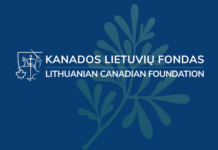
Lithuania, like other EU countries, has been facing a shortage of antibiotics. Doctors have been forced to adjust their treatment plans, while drug authorities expect supply to revive by April. There has never been such a shortage of antibiotics before, say pharmacists.
Family doctors say they have had to prescribe the so-called second choice drugs, stronger and narrower spectrum medicines, breaking with global guidelines to use whatever is available in pharmacies, which is time-consuming and can lead to complications for patients.
The Drug Control Agency said there is a shortage of antibiotics with the active ingredient amoxicillin across Europe because of the huge increase in demand following the Covid pandemic. Fewer people were suffering from colds during the pandemic, which led to a slowdown in production and orders, but now the demand is back to its usual level.
The Agency turned to issuing authorizations quickly for the supply of medicines in packaging labelled in foreign languages. There are currently four manufacturers in Europe producing the antibiotics that are in short supply, and three of them are registered in Lithuania.
The same problem began in the West in October 2022, with a number of shortages impacting antibiotics, primarily amoxicillin, reported through the national drug shortage reporting database (drugshortagescanada.ca). Since then, supply shortages have been felt in communities across the country.
Other countries, like the US and Australia are reporting shortages of amoxicillin, citing a significant increase in demand as well. This is considered a global shortage.
Similar to the acetaminophen/ibuprofen shortage, the antibiotic shortage is the result of an overwhelming demand that is driven by a surge in respiratory infections, particularly among children. Manufacturers are reporting that demand has been increasing since June and is generally up 300-400%.



























